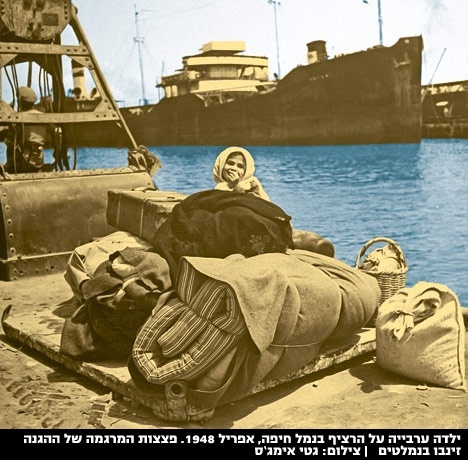Two months ago, the Knesset passed the Budget Principles Law (Amendment 39 ), more popularly known as the "Nakba Law." The ostensibly procedural clause is intended to prevent institutions that receive state funding from marking the "day of the catastrophe" - which is how the Palestinians refer to May 15, 1948, the day the British Mandate in Palestine came to an end.
Paradoxically, it is the determined attempt to erase the day from the Israeli-Jewish consciousness that has increased awareness of the Nakba among Jews. Recent months saw a surge in Internet searches for the word "Nakba," according to Google Trends (which shows word-search patterns on the Web ). The index shows the usual yearly leap in English and Arabic ahead of May, but indicates an unprecedentedly huge increase in Hebrew this year. Clearly, the unusually large scope of events on Nakba Day last month contributed to the growing public interest and heightened the emotional content of the term - sometimes absurdly so. Two weeks ago, for example, MK Aryeh Eldad (National Union ) objected to the decision to hang a painting titled "The Citrus Grower" in the Knesset building. According to Eldad, the work is a "Nakba painting." The painting, by Eliyahu Arik Bokobza, is based on a pastoral photograph taken in 1939, showing a rural Arab family dressed in traditional garb, with orange trees in the background. In his complaint to the Knesset speaker, Eldad wrote, "Why do you want to add an artistic expression by an Israeli artist with a twisted mind and afflicted by self-hate, who is calling the Arab lie the truth and thereby rejecting our truth?"
This year, the primal fear of the Nakba spurred an "appropriate Zionist response." Since Independence Day, members of Im Tirtzu - an ultra-nationalist group - have been distributing a pamphlet called "Nakba Nonsense - The Pamphlet that Fights for the Truth." In the course of 70 pages, the authors - journalist Erel Segal and Im Tirtzu co-founder Erez Tadmor - try to persuade readers that the Arabs, who view themselves as victims of the Israeli-Palestinian conflict, are actually the aggressors. It therefore follows that Israel, which is generally perceived as the aggressor, is actually the victim. In their words, the pamphlet "tries to fight the lies, and it prosecutes a war against the terrible falsehoods in whose name our enemies seek to undermine the just path of Zionism and prepare the ground for the destruction of the Jewish state." The authors refer to the succession of lies they say they are refuting as "the myth of the Nakba."
In the pamphlet's second chapter, titled "The Abandonment - Haifa as a Case in Point," the authors discuss what they call the lie of the "deliberate expulsion." Drawing on the book "Fabricating Israeli History" by Prof. Efraim Karsh, they proceed to take issue with the so-called "new historians" - academics who question the conventionally-held Arab-Israeli narrative. According to the pamphlet, these academics are out "to spread the libel that the Jewish fighting forces perpetrated a series of brutal massacres in the service of a deliberate policy of expulsion and ethnic cleansing." The authors conclude the chapter by describing the conquest of Haifa in the War of Independence as evidence that the Israeli side did not pursue any such policy and that "the Arab leadership bears responsibility for the results of the war and the refugee problem."
Read the Full article



